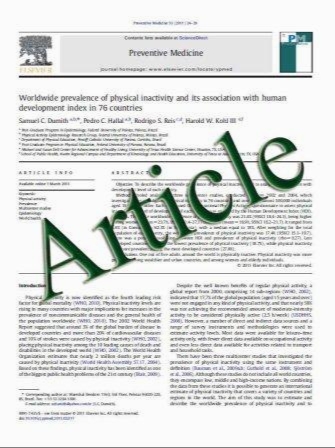Role of Endothelin-1 in Human Aneurysmal Subarachnoid Hemorrhage: Associations with Vasospasm and Delayed Cerebral Ischemia
- نوع فایل : کتاب
- زبان : انگلیسی
- مؤلف : Bhavani P. Thampatty • Paula R. Sherwood • Matthew J. Gallek • Elizabeth A. Crago • Dianxu Ren • Allison J. Hricik • Chien-Wen J. Kuo • Megan M. Kla
- چاپ و سال / کشور: 2011
Description
Background Endothelin-1 (ET-1) is a potent vasoconstrictor implicated in the pathogenesis of vasospasm and delayed cerebral ischemia (DCI) in aneurysmal subarachnoid hemorrhage (aSAH) patients. The aim of this study was to investigate the relationship between cerebrospinal fluid (CSF) ET-1 levels and angiographic vasospasm and DCI. Methods Patients with aSAH were consented (n = 106). Cerebral vasospasm was determined by angiography. DCI was determined by transcranial Doppler (TCD) results and/ or angiogram results with corresponding clinical deterioration. CSF ET-1 levels over 14 days after the initial insult was quantified by ELISA. ET-1 analysis included a groupbased trajectory analysis and ET-1 exposure rate during 24, 48, and 72 h prior to, as well as 72 h post angiography, or clinical deterioration. Results Trajectory analysis revealed two distinct groups of subjects with 56% of patients in the low ET-1 trajectory group (mean at day 1 = 0.31 pg/ml; SE = 0.04; mean at day 14 = 0.41 pg/ml; SE = 0.15) and 44% of patients in the high ET-1 trajectory group (mean at day 1 = 0.65 pg/ml; SE = 0.08; mean at day 14 = 0.61 pg/ml; SE = 0.06). Furthermore, we observed that ET-1 exposure rate 72 h before angiography and clinical spasm was a significant predictor of both angiographic vasospasm and DCI, whereas, ET-1 exposure after angiography and clinical spasm was not associated with either angiographic vasospasm or DCI. Conclusion Based on these results we conclude that ET-1 concentrations are elevated in a sub-group of patients and that the acute (72 h prior to angiography and clinical neurological deterioration), but not chronic, elevations in CSF ET-1 concentrations are indicative of the pathogenic alterations of vasospasm and DCI in aSAH patients.
Neurocrit Care (2011) 15:19–27 DOI 10.1007/s12028-011-9508-9 Published online: 1 February 2011


